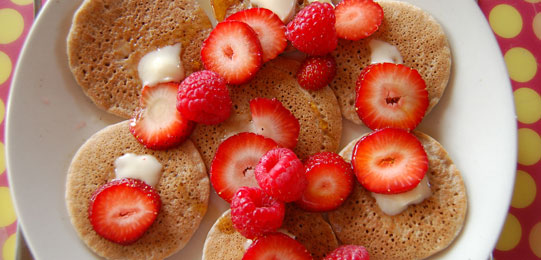
Making Your own Flour
Cooking with non-traditional flours may seem intimidating at first. However, once you know how, it is really quite easy. You may have noticed that non-traditional flours are quite pricey, for the little tiny packages that are available for purchase. Instead of going broke, buying pre-made flour, you may want to make your own flour. Don’t worry, you don’t have to have a flour mill in order to make your own flour. (It would be really nice to have a flour mill, although it is not necessary.)
The first thing to do is decide which kinds of flour you want to make. If you want to make Buckwheat flour, you need to buy some Buckwheat Groats. I always buy the Hulled Buckwheat Groats. This means that the hulls have been removed. While the hulls are edible, they alter the flavor of the flour. In our opinion, the hulls, while making a dark buckwheat flour, also give the flour a somewhat bitter taste. Another drawback to having the hulls in your flour, is that small pieces of the hulls will stuck in your teeth.
Once you buy your buckwheat groats, the first thing you need to do is freeze the groats. This does three things… first, it keeps any bugs from getting into your Groats. Second, it makes it easier to grind the groats into flour if they are frozen first. Finally, freezing your buckwheat helps to keep it fresh longer. After you have frozen the buckwheat, remove the amount desired from the freezer. To make the flour, you will put the groats into a blender (I prefer a blender with a glass jar, rather than plastic) and press the grind button. Make sure not to put too many groats into the blender, as will overburden your blender. For a finer flour, after using the grind button, I use the liquify button on my blender. When your flour has been ground, transfer it to another container, and continue the same process until you have ground enough flour.
If you would like to make nut flour, such as almond flour or walnut flour, you are going to do the same as you did with the buckwheat flour. Always make sure that your nuts are thoroughly frozen before grinding them. If they are not frozen, you will end up with a gummy mess instead of flour. Also, you need to make sure you do not blend the nuts too long, or you will end up with a nut butter instead of nut flour. I only use the grind button on the blender for making nut flours, I do not use the liquify button for nuts. Following these instructions, you can make almost any kind of flour that you want, usually at quite a large savings over buying the pre-packaged flours.
I am a homeschooling mom of two beautiful children. Both of my children have food allergies, which led me to becoming the author of: “The Truly Grain Free Cookbook” ISBN# is: 1-60563-263-5